A thermostat determines the current temperature inside a room and performs many other functions together with your HVAC system to maintain a comfortable temperature. But if it starts malfunctioning, will it cause your AC to freeze up? We've researched this issue to find the answer for you.
A bad thermostat, aside from other equipment issues, can cause your AC to freeze up. Freezing often happens during cold weather especially when the thermostat is set too low, causing the AC to work harder.
Adjusting and setting up your thermostat to create a comfortable atmosphere is a matter of great importance. In fact, if this piece of equipment becomes faulty and is unheeded, it can give you sky-high electric bills in the long run! Stick around to learn more about this problem and to be able to fix it.
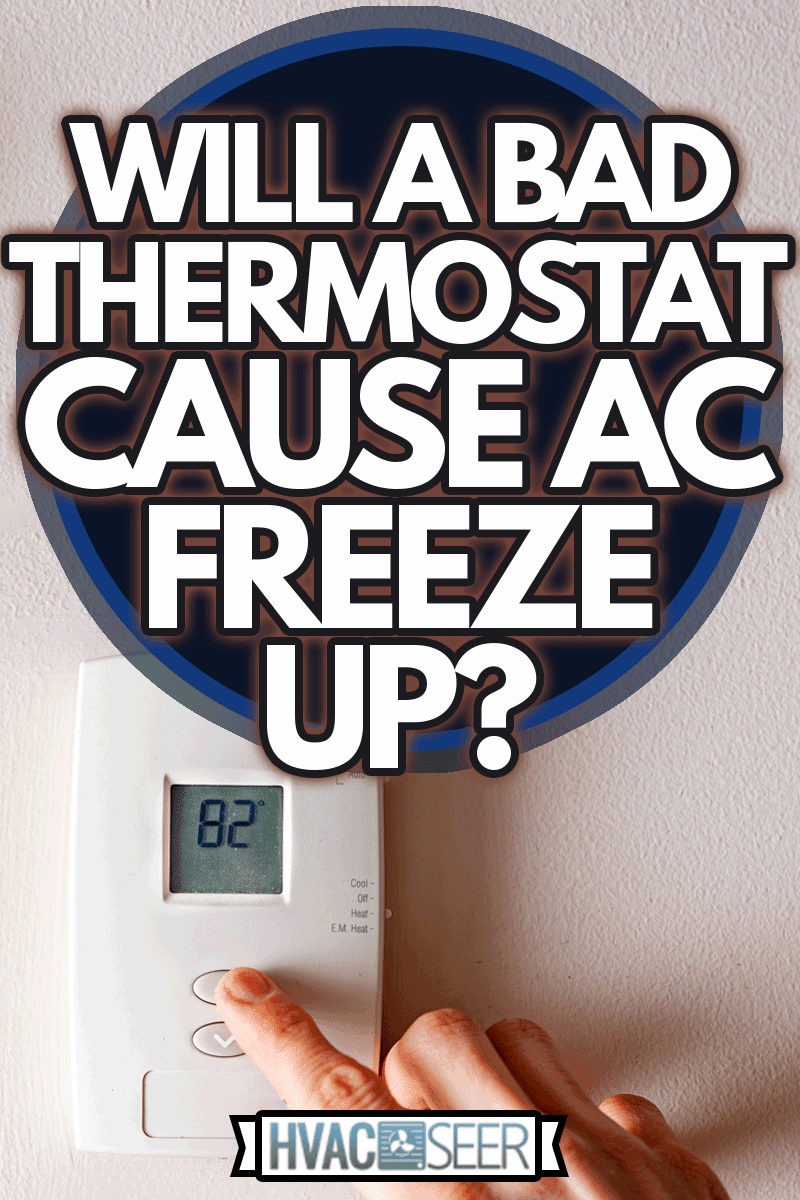
What Causes AC to Freeze Up?
Besides a broken thermostat, there are other reasons why AC freezes up during winter or summer. Understanding the cause of any HVAC problem is key to finding practical and professional solutions.
Below are the common causes to look out for:
Dirty air filters
All ACs need adequate airflow. But airflow can become problematic if the filters are extremely dirty and clogged.
By impeding the flow of warm air coming from the home, moisture buildup on the evaporator coil can occur, causing icing. The other cause of airflow restriction may be damaged blower motors.
Low refrigerant levels
Over time, leaks can happen to your cooling system especially if it's underserviced. Both refrigerant leaks or low levels thereof can cause your AC system to struggle in producing cool air. Remember that refrigerants are responsible for absorbing environmental heat to convert it into cool air.
Drainage blockages
During the cooling process, the AC condenses water vapor. The liquid should be constantly drained to keep the system running efficiently.
However, the coils can freeze, causing blockage of the drain hole. Another way to ensure that the drainpipe is doing its job is by removing the accumulated debris and molds from it.
Cleaning air filters can be done manually, but fixing refrigerant leaks would need help from an air conditioning professional.
If you notice that your AC gives off warm air instead of cold air, produces a hissing sound, or causes a consistent spike in your electric consumption, the main culprit is most likely a leaking refrigerant.
The good news is that there are ways to detect if HVAC refrigerants are leaking by using a refrigerant leak detector.
Check out this refrigerant leak detector on Amazon.
How Low Refrigerant Levels Affect Air Conditioning
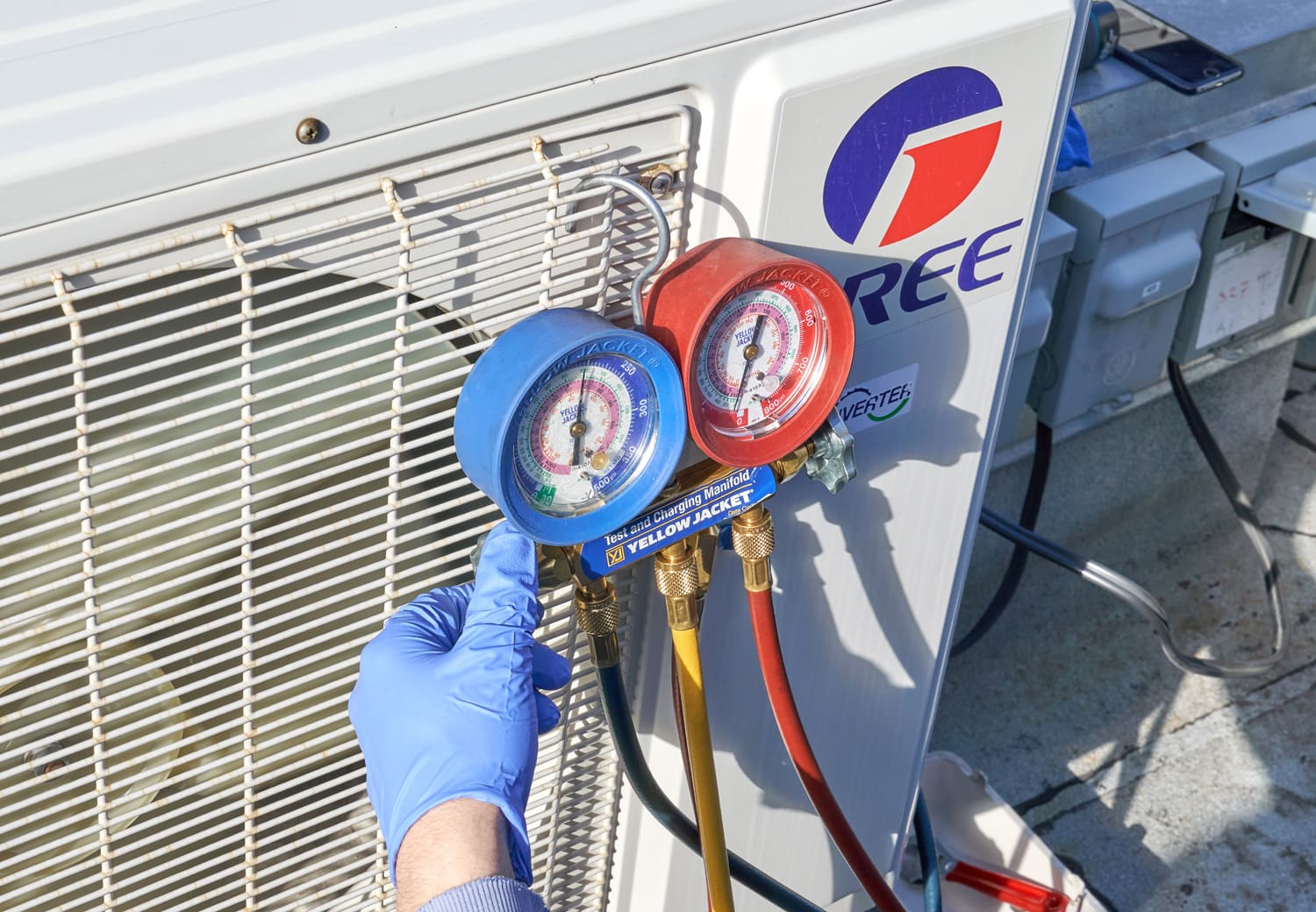
A decrease due to leaks in the refrigerant level can cause less efficient heat exchange between the environment heat and the cooling coils in a central AC. This will result in the rise of the home interior's temperature, exhausting the system's operation further.
What to Do When Your Air Conditioner Is Frozen
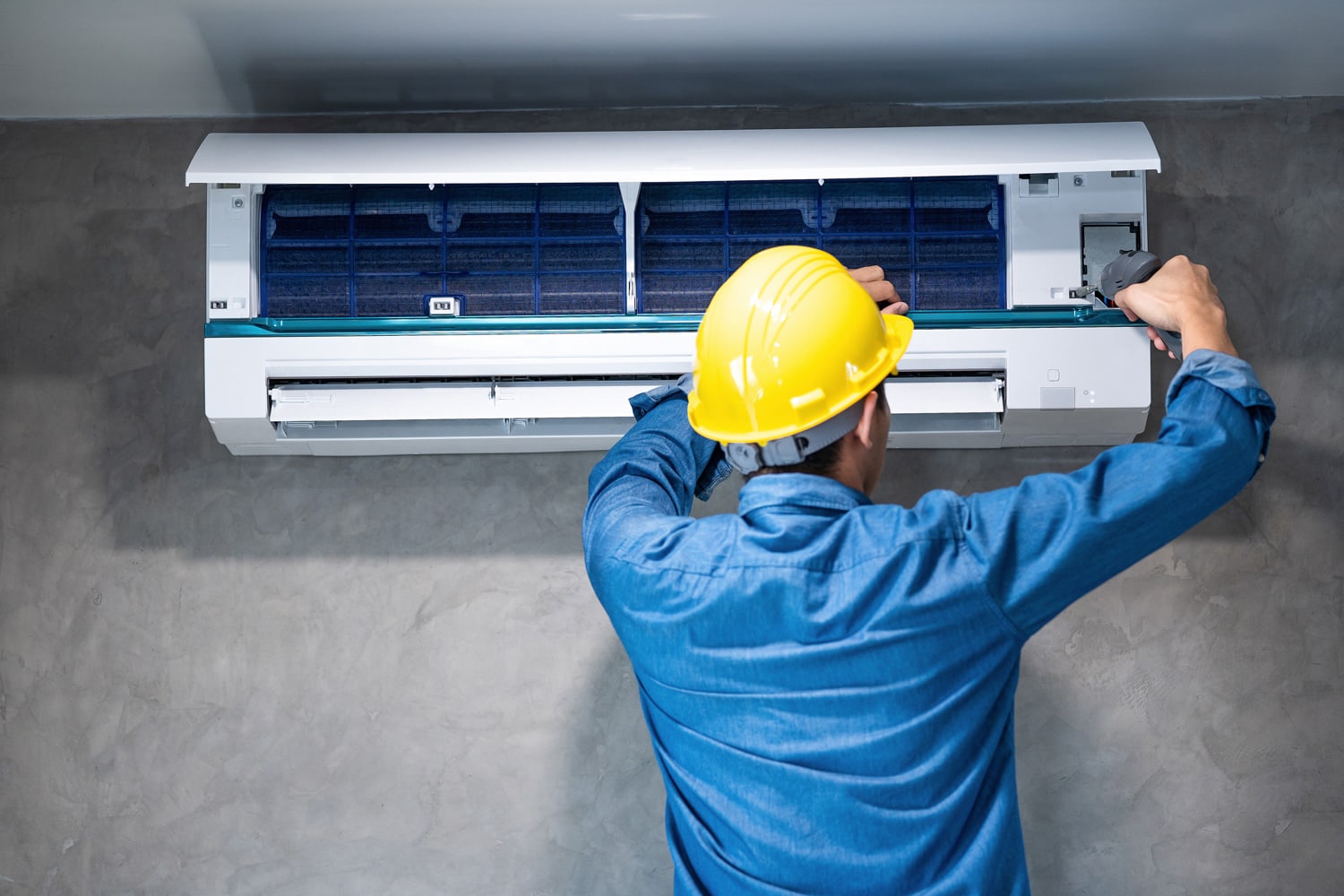
You need to understand that freezing can happen to both indoor and outdoor units. AC freezing signals that you need to fix something in the HVAC system.
When your AC freezes up, do the following:
Turn off your air conditioner and let the ice melt completely
Depending on the amount of ice buildup, thawing could take from one hour to 24 hours.
Let the evaporator coils dry
When the ice is all thawed out, turn on the blower or fan to let the air circulate to dry the evaporator coils thoroughly.
Clean or change your air filter
Take the cover off the air conditioner to clean or change your air filter. Clean it under running water then dry. Typically, a filter should be checked once a month, even more so when there are pets, children, or smokers at home.
Check to see if the AC works
After cleaning the filter, turn on the AC to see if it's working normally again. If not, you will need to seek help from an HVAC professional becomes necessary.
Remember not to continue operating the unit if it's frozen because the compressor or motor might be damaged. Replacing these components is much more expensive.
What are the Symptoms of a Bad AC Thermostat?
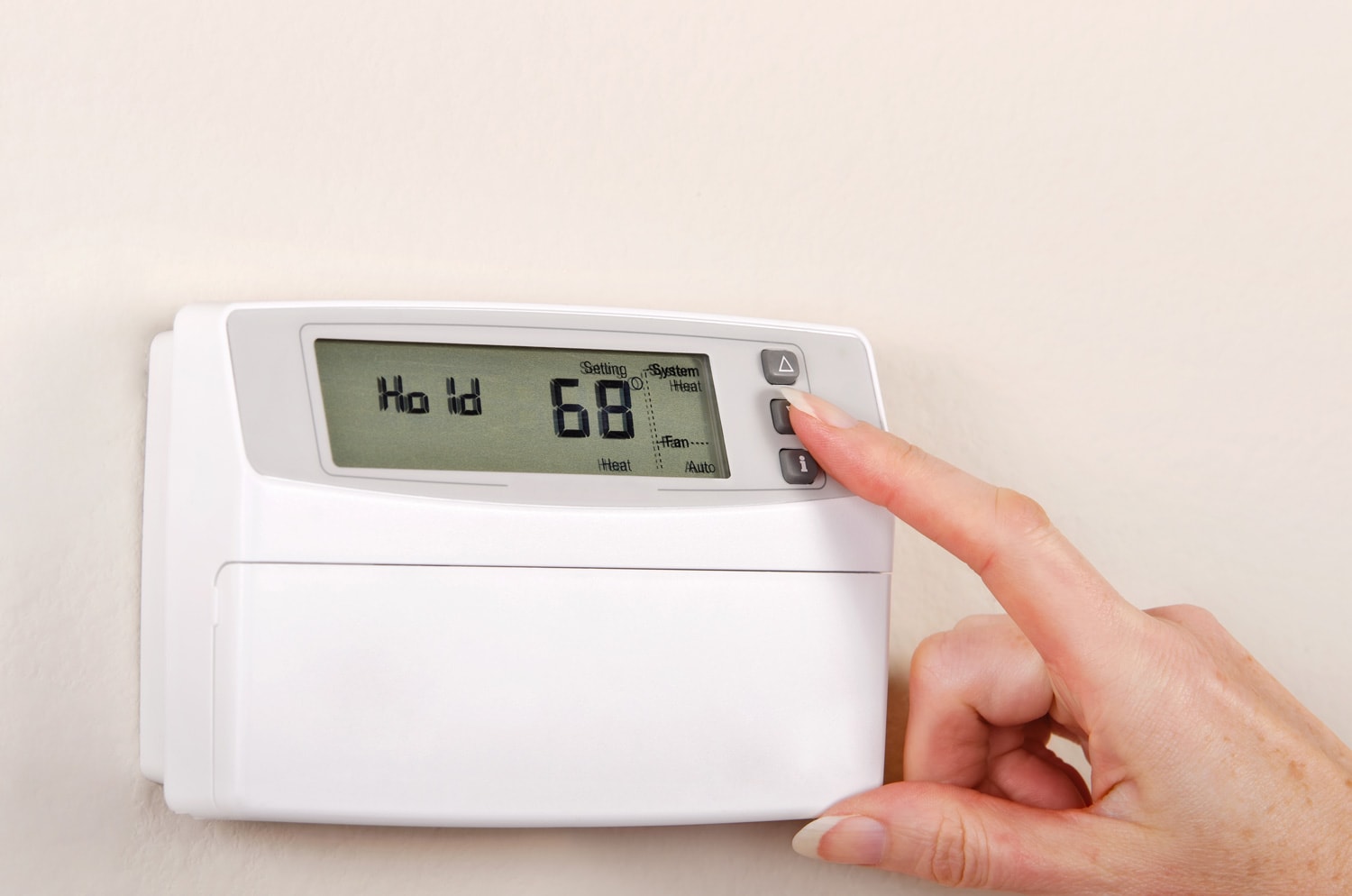
Being aware of the symptoms of a broken AC thermostat is imperative so you'll be able to nip the problem in the bud. You will know that the thermostat is no longer in its optimal condition and needs replacement when you see the following signs:
- The heating or cooling system does not turn on or off.
- The thermostat displays an incorrect temperature reading.
- The thermostat does not respond to any adjustment you make.
- The HVAC system frequently starts and stops.
- The HVAC system short cycles.
- The thermostat has not been replaced for more than 10 years.
What to Do if the Thermostat is Not Working?
Since communicating with your HVAC system is the main function of a thermostat, finding it broken can be horrible in the midst of a scorching summer or bone-chilling winter!
However, at times, replacing your thermostat may not be the best option especially if you can still fix it. Knowing how to troubleshoot thermostat issues can save you money spent on a technician's service.
Here are some useful tips on what to do if your thermostat malfunctions:
Dark or unresponsive thermostat display
The HVAC system can stop working with a dead thermostat. If this happens, replace its batteries. Also, when the cooling/heating system stops working, you'll need to look into the possibility of having a tripped breaker or blown fuse in the electrical panel.
Discrepancies between the room temperature and thermostat setting
An inconsistency in the thermostat setting and the actual room temperature can occur due to poor installation and wrong positioning. Inappropriate locations can render the thermostat powerless in regulating the temperature correctly.
To avoid discrepancies like this, avoid placing your thermostat in the following areas that can confuse the system:
- By the door or across the window receiving direct sunlight
- Near an AC
- Directly above or below a supply vent or register
- On exterior walls where the radiant temperature will be significantly different than the air temperature inside your home
- In the kitchen where cooking appliances are often hot
- In the hallways where airflow is usually constricted due to a long and narrow space
It is recommended to install the thermostat at a central location at home with a ceiling of average height (e.g., living rooms) approximately 52 to 60 inches (5 feet) above the floor.
Height and temperature readings are correlated. If a thermostat is placed below 52 inches, it will display a low temperature. A higher reading is registered if it's placed above 60 inches.
Frequent Short Cycling or Continuous Running
Short cycling in HVAC systems is defined as a situation where a heater or a cooler turns on and off too frequently. A dirty thermostat can trigger short cycling. Wiring and electrical issues can also cause the system to run too much or too little.
In order to clean your thermostat, remove the cover. Use a soft brush, preferably a paintbrush, to get rid of the dirt, dust, or grime between the contact points and lever switches.
Note, however, that smart thermostats—those that are controlled by internet-connected devices—need no internal cleaning at all.
Uncalibrated thermostat
Uncalibrated thermostats, caused by dirt buildup inside or bumping, can give inaccurate temperature readings. While calibration can be done by a professional, you can easily do it on your own.
To calibrate your thermostat, use a room/digital thermometer taped to the wall just beside your thermostat. Make sure to keep them apart.
Wait for 15 minutes and see if your HVAC system’s thermostat registers the same temperature displayed on the thermometer. If their results are inconsistent with each other, with at least one degree Fahrenheit difference, the thermostat needs recalibration.
Before doing so, you'll need to open the thermostat to remove the dirt. Using a vacuum to clean the interior of the thermostat isn't advisable. Do the calibration again after cleaning. If the temperatures on both devices after 15 minutes are different still, consider replacing your thermostat or having it serviced.
Conclusion
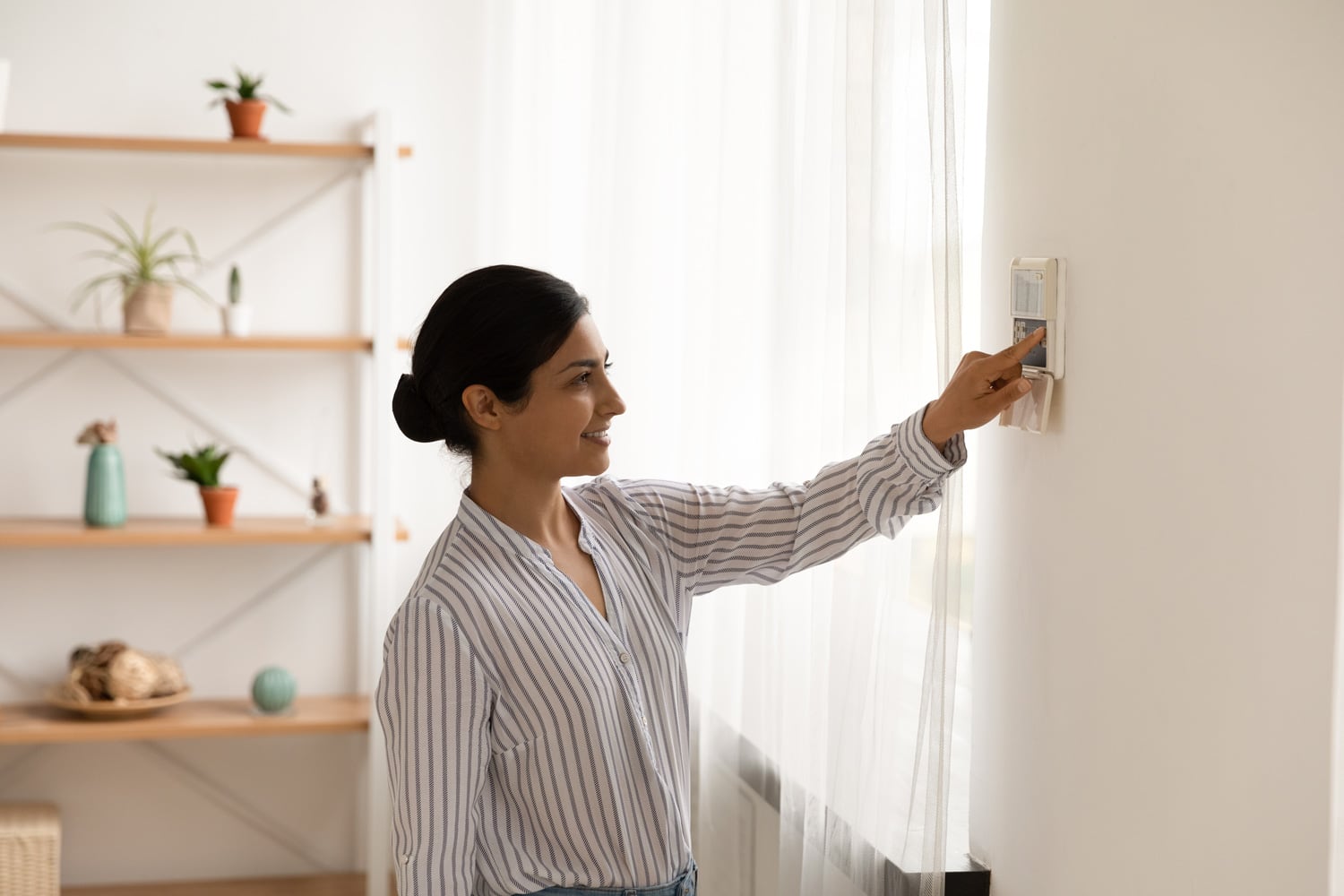
Nothing compares to the comfort brought about by the perfect temperature inside your home while the outside environment is sweltering with heat or freezing with snow.
One indispensable practice in keeping your HVAC system working efficiently is making sure that your thermostat is regularly maintained and properly positioned.
If you find this article helpful, you can learn more by reading these informative posts:

